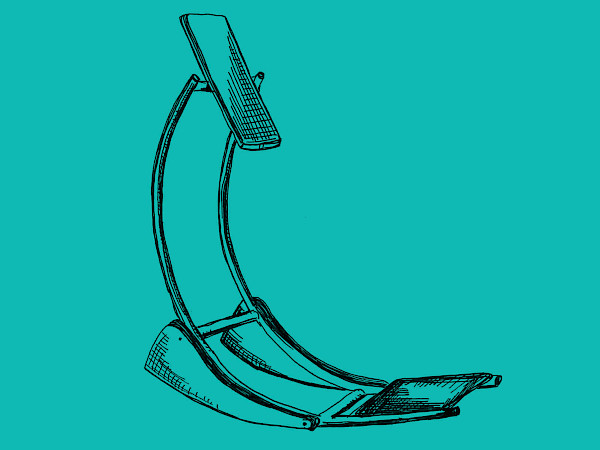Kohpa – The world’s first paper with electrical conductibility
27.09.2021

The Shark Tank of Patents
In season 10, episode 2, of the TV show "Die Höhle der Löwen" (German version of the US show Shark Tank and the UK show Dragon's Den), Walter Reichel and Peter Helfer present a carbon fiber paper called KOHPA: an electrically conductive paper that can be used for power and heat distribution as well as radiation protection.
A European patent was granted for KOHPA. In principle, the official act of grant prohibits the judges of the German infringement courts from questioning the legal validity. However, this does not automatically mean that a patent, once granted, is irrefutably legally valid and thus unassailable. For this purpose, German and European patent law provide for downstream two-sided proceedings (e.g. opposition proceedings or nullity proceedings) in which the patent can be revoked or declared null and void or maintained only to a limited extent.
The following therefore explains why the KOHPA patent was rightly granted in itself, but why the Examining Division's assessment of the grant of the patent in subsequent validity proceedings might not be shared by the judicial chambers there.
The product: KOHPA.
What is it about?
KOHPA is an electrically conductive paper, in particular a carbon fiber paper or carbon fiber nonwoven. Natural fibers and recycled carbon fiber composites are used in its manufacture. Due to the paper properties, KOHPA can be easily installed in walls, floors or ceilings. The conductive property also provides a shielding effect against electromagnetic radiation, for example to protect electronic components, as well as organic life. KOHPA is space-saving and ultra-light. In addition to the excellent formability, the sustainability concept is of particular advantage due to the use of recycled materials.
The European patent application
(Ref.: 14156382.5)
In a European patent application, an attempt was made to protect KOHPA as a product. Claim 1, which basically determines the scope of protection for the product, defines the following:
An electrically conductive paper fabric comprising fiber materials, chemical additives and residual moisture, characterized in that the paper fabric includes cellulose-containing fiber materials and carbon fibers, due to the mixing ratio of which the specific resistance of the paper fabric is in a range between 10-1 Ωm and 10-6 Ωm.
Examination proceedings
In the examination proceedings before the EPO, the examiner cited document D1 (US 3,367,851 A) as novelty-destroying prior art for the subject-matter of claim 1.
Info: "Novelty" is one of the requirements to obtain a patent grant. A claim is novel if it differs structurally or functionally from the prior art. "Inventive step" is another requirement to obtain a patent grant. In short, inventive step means when there is a difference from an embodiment in the prior art which difference has an inherent technical effect and which is not derivable in the overall view of the prior art. This is intended to prevent mere routine further developments from leading to a monopoly position.
D1 discloses a non-woven conductive paper mat having 1 to 35 % of carbonaceous fibers, and at least 50 % of insulative fibers, where the conductive paper mat has a specific resistance from about 0.036 to about 60 Ωcm (cf. introductory part of the D1).
Thus, at least one end point, namely 0.036 Ωcm, falls within the range of 10-1 Ωm and 10-6 Ωm as defined in claim 1. Claim 1 is therefore not novel.
In addition to the novelty objection, the examiner raises a clarity objection, alleging that claim 1 does not contain all the essential features of the invention, and in particular that the amount of cellulose-containing fiber materials and carbon fibers, and the length of the carbon fibers are missing.
Info: Clarity is a necessary requirement in European Patent law, which is specifically intended to achieve that the claimed subject matter of protection is clear and understandable. This also includes objections concerning essential features. In principle, the essential features of a claim are those features which are necessary to achieve a technical effect by which the technical problem underlying the patent application is solved. On the question of what is considered "essential," the opinions of applicants and examiners diverge widely in most cases. The patent attorney wants to achieve the broadest possible protection for their client and therefore avoid unnecessary clarifications in the claim, while the examiner wants to avoid a claim that is filled with abstract terms, which by their very nature are not so easily understood.
During the examination proceedings, the applicant decided to amend claim 1 by clarifying the amount of carbon fibers as well as the length of the carbon fibers. The inserted features are reproduced below, with optional features that do not limit the scope of protection of the claim crossed out.
"wherein the content of carbon fibers is more than 35 % or between more than 35 % and 99 %, preferably between 45 % and 85 %, particularly preferably between 50 % and 80 %, further particularly preferably more than 50 %, and the carbon fibers have a fiber length in a range between 1 µm to 50,000 µm, preferably in a range between 8,000 µm to 50,000 µm, particularly preferably in a range between 1 µm to 8,000 µm, and further particularly preferably in a range between 5,000 µm to 8,000 µm"
Info: Optional features do not limit the scope of protection of the claim and are mostly considered unclear by examiners. To improve readability, these should instead be defined in dependent claims or in the description.
These newly introduced features eliminate, first, the clarity objections and, second, the examiner's novelty objections.
According to the applicant, the difference from D1 is allegedly in the proportion of carbon fibers, namely more than 35 %, whereas D1 discloses a range of 1 % to 35 %. The effect achieved by the higher proportion is improved conductivity. In D1, however, the range is limited to a maximum of 35 %, since otherwise the necessary tensile strength is lost as the proportion of carbon fibers increases.
Based on the amended claim 1, a patent (EP 2 770 104 B1) was subsequently granted.
Evaluation of the examination proceedings
Comparing the present invention including a value range of > 35 % to the disclosure of D1 including a value range of 1 to 35 %, it is questionable whether the present invention is objectively novel based on this alleged difference therebetween.
Info: In the case of technical numerical data, the general convention is that the maximum error for the last digit indicated results from the rounding convention (cf. decision of the Boards of Appeal T 175/97).
This means that in the present case the maximum error in D1 is 35.4 %. However, in the granted claim 1, it is defined that the carbon fiber content is "more than 35 %". Thus, by the rounding convention, the carbon fiber content in D1 of 35.4 % falls within this range because 35.4 % > 35 %. This assessment is supported by the case law of the Boards of Appeal (see T 594/01).
Therefore, it could be that in later two-sided validity proceedings, claim 1 of the granted patent is considered by the examiners or judges then in charge as not sufficiently delimited from D1.
Suggestions for shaping
the scope of protection
In the examination proceedings, the wording of the claims cannot be changed arbitrarily. Rather, the applicant is bound by what is originally disclosed clearly and directly in the application documents. In European practice, therefore, the principle applies that, if possible, literal text passages should be used to distinguish the invention from the prior art. Although implicitly disclosed amendments and recourse to the drawings for amendments to the claims are also possible in principle, these are frequently rejected by examiners as not directly and unambiguously disclosed.
Since the next originally disclosed range is indicated in the application documents as "more than 45 %", an even more targeted indication of value ranges could be advantageous, allowing for an even broader spectrum in order to differentiate from the prior art in a targeted but broader way. For this purpose, instead of value ranges, graduated minimum indications or graduated maximum indications could be used to shape the scope of protection even more effective.
Info: The application text should contain as many forward-thinking delineation features as possible, which can later be used in the proceedings as a delineation to the prior art.
Crucial in the prosecution of patent applications is the underlying strategy. In order to achieve the best possible protection for the invention, the focus must be on the drafting and preparation of the documents. This includes drafting the patent application prior to filing and equally the appropriate and allowable amendment of the claims during the examination proceedings.
Conclusion
A granted patent does not mean that it was irrefutably rightfully granted. This is because the validity of the grant can be challenged subsequently in downstream validity proceedings. As outlined above (hypothetically), in the present case subsequent validity proceedings could possibly be at least partially successful and restrict the scope of protection of the granted patent.
The result could be a scope of protection limited to the carbon fiber content of "more than 45 %". This underlines the enormous importance of the scope of protection defined in the patent application. This is determined to the maximum extent by the patent application, but is not legally binding until the end of the examination proceedings with the patent grant. However, even in subsequent two-sided proceedings, the scope of protection may have to be suitably adapted in order to avoid unnecessary restrictions of the scope of protection. It is therefore important to indicate suitable delineation options for the scope of protection when drafting the patent application, for example by specifying graduated minimum details or graduated maximum details. This means that the scope of protection must always be designed individually for each invention in dialog with the inventor.
Disclaimer: The above contribution reflects the personal opinion of the author. The assessments and statements made in the article do not constitute legal advice and are provided under exclusion of any liability. If you need an assessment of an individual case, please contact the author and/or the law firm KUHNEN & WACKER.
Further news and
publications from K&W

Start Your Career at K&W
and Become Part of Our Team
Are you ambitious and flexible? Do you like to work independently and are prepared to take responsibility? If so, K&W is your place to be.
Our HR manager Elwine Kaschner looks forward to receiving your application.





